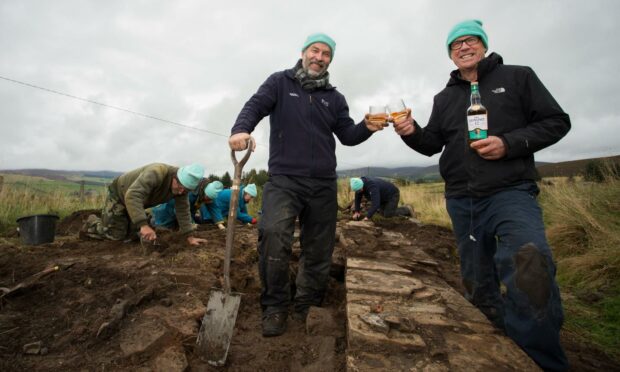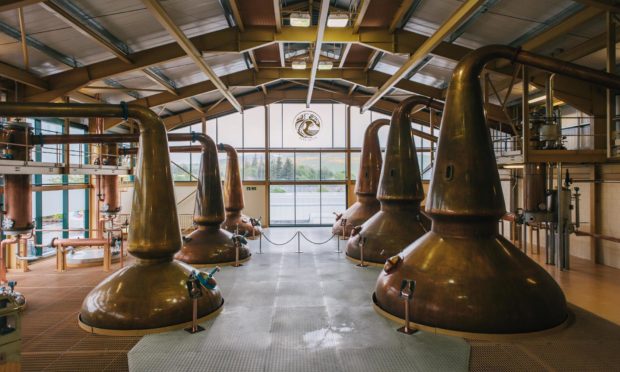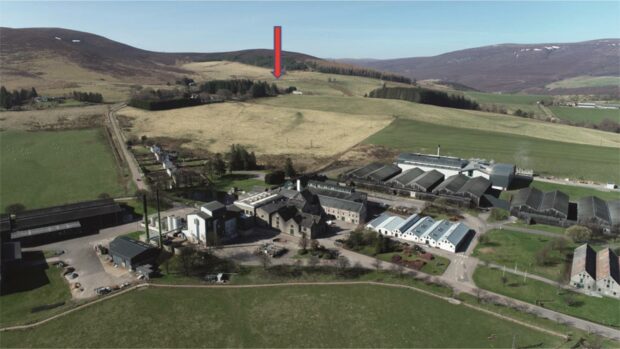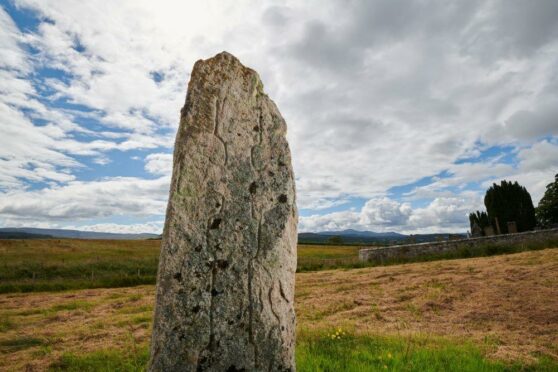A dig near a Moray distillery has led to historical discoveries dating back to 1824 – uncovering the past of whisky production in Scotland.
Archaeologists have discovered the origins of one of Scotland’s first distilleries during an excavation at the old site of the Glenlivet Distillery.
The dig at the site of Upper Drumin, in Speyside is less than a mile from the current working distillery and has so far uncovered the floor of the old site, which dates from 1824.
Fragments of bottle glass and ceramics have also been uncovered which are believed to have been used in the whisky production centuries ago.
The excavation began on Monday and will continue until Saturday as part of the Pioneering Spirit project.
The project is being run in partnership between the distillery and the National Trust for Scotland to uncover and share the history and impact of whisky production on Scotland’s cultural heritage and our modern way of life.
Volunteers including staff from Glenlivet and members of the local community are working to complete the dig with the support of the Crown Estate Scotland Ranger Service.
The old site – where the excavation is focused – is where Glenlivet’s founder, George Smith, became the first illicit producer to get his distillery licensed following the 1823 Excise Act.
Until now, there were no surviving original parts of the distillery, aside from the remains of two of the old mill dams.
The old distillery – marked by a monument detailing it’s role in whisky history – was originally a farm which was converted following the Excise Act – which made the licensed production of whisky possible.
Before its legalisation, Mr Smith made the spirit illegally and smuggled his whisky to customers – much like distillers across Speyside and the Highlands at the time.
For those keen to find out more about the archaeological finds, a public drop-in day will take place on Saturday from 10am until 4pm
‘This special place is really inspiring’
Derek Alexander, the National Trust for Scotland’s head of archaeology who conducted a search of the old distillery in the 1990s said: “Returning to this place after nearly 25 years to finally uncover the remains of this special place is really inspiring.
“Brushing dirt from the flagstones where George Smith, one of the lead figures of Scotland’s whisky industry, stood was incredible.”
Master distiller at Glenlivet Alan Winchester added: “I have always been fascinated by The Glenlivet’s rich history, so to be entering the second year of our partnership with the National Trust for Scotland is a delight.
“The majority of my career has been spent continuing the legacy of our founder George Smith, so it’s really interesting to have the opportunity to uncover even more secrets about our illicit past and tell new stories about the role Scotch has played in defining Scottish culture.”
Explore history in the Highlands
Meanwhile, the rich Pictish heritage of the north is being highlighted with a new website aiming to encouraging people to explore the Highland Pictish Trail.
The Picts dominated the north-east from 400AD for 600 years and the carved stones they left behind tells their story through carvings of animals, hunting and battles.
Their network of hill forts also play a part in discovering their history along with the carved stones, museums and visitor centres – all of which can be explored on the trail.
Visitors can take in more than 30 Pictish sites, as well as the mighty hill fort of Craig Phadrig, near Inverness, with its views over the Beauly Firth and towards the Great Glen.
High Life Highland chairman Ian Ross said: “This new project offers a great opportunity for residents and visitors to step back in time and discover life as it was 1,000 years ago.
“For many years, the Highlands were thought to be just an outpost of a Pictish kingdom in the Perthshire and Angus areas, but recent discoveries have shown the north was an important Pictish area in its own right – with major religious and royal centres of power, and strong links with Europe.
“I hope people will enjoy a weekend or during the upcoming school holidays learning about Pictish culture and society, whether through the app or by picking up one of the leaflets soon available from our museums or libraries.”
For more information on the trail, click here.



